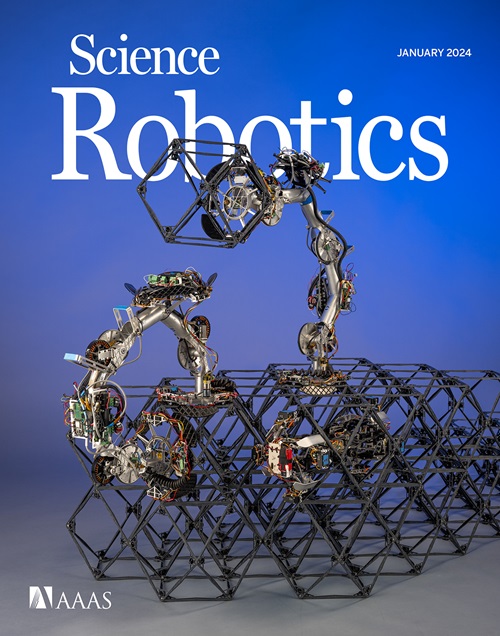Telesurgery and the importance of context
IF 27.5
1区 计算机科学
Q1 ROBOTICS
引用次数: 0
Abstract
Telesurgery has the potential to overcome geographical barriers in surgical care, encouraging its deployment in areas with sparse surgical expertise. Despite successful in-human experiments and substantial technological progress, the adoption of telesurgery remains slow. In this Review, we analyze the reasons for this slow adoption. First, we identify various contexts for telesurgery and highlight the vastly different requirements for their realization. We then discuss why procedures with high urgency and skill sparsity are particularly suitable for telesurgery. Last, we summarize key research areas essential for further progress. The goal of this Review is to provide the reader with a comprehensive analysis of the current state of telesurgery research and to provide guidance for faster adoption of this exciting technology.远程外科和语境的重要性
远程外科手术有潜力克服外科护理的地理障碍,鼓励其在缺乏外科专业知识的地区部署。尽管成功的人体实验和实质性的技术进步,采用远程手术仍然缓慢。在这篇评论中,我们分析了这种缓慢采用的原因。首先,我们确定了远程外科手术的各种背景,并强调了其实现的巨大不同的要求。然后我们讨论为什么高度紧急和技能稀疏的手术特别适合远程手术。最后,总结了今后研究的重点领域。这篇综述的目的是为读者提供远程外科研究现状的全面分析,并为更快地采用这一令人兴奋的技术提供指导。
本文章由计算机程序翻译,如有差异,请以英文原文为准。
求助全文
约1分钟内获得全文
求助全文
来源期刊

Science Robotics
Mathematics-Control and Optimization
CiteScore
30.60
自引率
2.80%
发文量
83
期刊介绍:
Science Robotics publishes original, peer-reviewed, science- or engineering-based research articles that advance the field of robotics. The journal also features editor-commissioned Reviews. An international team of academic editors holds Science Robotics articles to the same high-quality standard that is the hallmark of the Science family of journals.
Sub-topics include: actuators, advanced materials, artificial Intelligence, autonomous vehicles, bio-inspired design, exoskeletons, fabrication, field robotics, human-robot interaction, humanoids, industrial robotics, kinematics, machine learning, material science, medical technology, motion planning and control, micro- and nano-robotics, multi-robot control, sensors, service robotics, social and ethical issues, soft robotics, and space, planetary and undersea exploration.
 求助内容:
求助内容: 应助结果提醒方式:
应助结果提醒方式:


